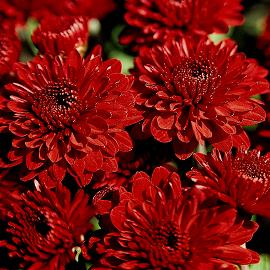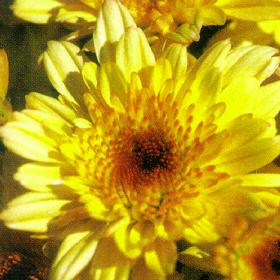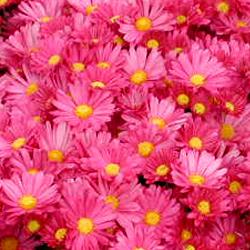Fall into Color with Garden Mums
 Summer is over and school is back in session, summer plants are starting fade away a bit, so that means it is time for fall mums!!!! I have always loved the fall; growing up in Pennsylvania in the month of September our first high school football game of the season was in Erie, Pennsylvania. I was in the marching band and that first game of the season meant pulling out the long underwear to wear under our uniforms, there was already a chill in the night air.
Summer is over and school is back in session, summer plants are starting fade away a bit, so that means it is time for fall mums!!!! I have always loved the fall; growing up in Pennsylvania in the month of September our first high school football game of the season was in Erie, Pennsylvania. I was in the marching band and that first game of the season meant pulling out the long underwear to wear under our uniforms, there was already a chill in the night air.
In the following weeks we would travel around the state to watch the leaves change color, help our elderly neighbor pick apples and go to our local garden center to select garden mums to put in the garden. I remember how difficult it was to pick one as they were all so beautiful. There were many different flower types and colors too. Colors ranged from shades of yellow to white, red, various shades of pink, oranges and bronze.
Mums can be used in many ways for decorating your house or garden. From deck pots, mixed containers with other fall blooming annuals or perennials, or creating a display with scarecrows, hay bales and pumpkins, mums are the epitome of versatility. It’s a wonderful time to be creative, and with mum varieties that bloom early, mid or late season, you can have fall color from late August until November. I love driving around in the fall to see how people use mums to decorate their homes.
If you are going to plant mums in your garden, make sure you receive sun for at least 4-6 hours, and be sure there is good drainage; the soil should be moist but not soggy. Plant early so roots can become established before hard frost. Overwintering garden mums in Maryland is possible if you work at it, although most people plant them as annuals.
To encourage overwintering, try the following suggestions. It is not cold weather that kills mums but rather the ice that may form around the roots if water collects in poorly-drained soil. As the blooms fade and the foliage of the plants dies cut the stems to 3-4 inches above the ground. (Leaving a small portion of the plant above ground ensures fuller plants next year as the new stems grow from the ones that have been trimmed.)



Provide a layer of mulch 2 inches deep over the plant after the ground has frozen to keep the plants insulated and to protect the plant from freezing and thawing of the soil which may damage the roots (frost heave). Remove the mulch in early March. If you are lucky enough to have your plant survive the winter there will be a few steps you will need to follow for future success. Happy Fall!
By Marian Parsley – Behnkes Annual Plants Buyer/Manager

This Post Has 0 Comments